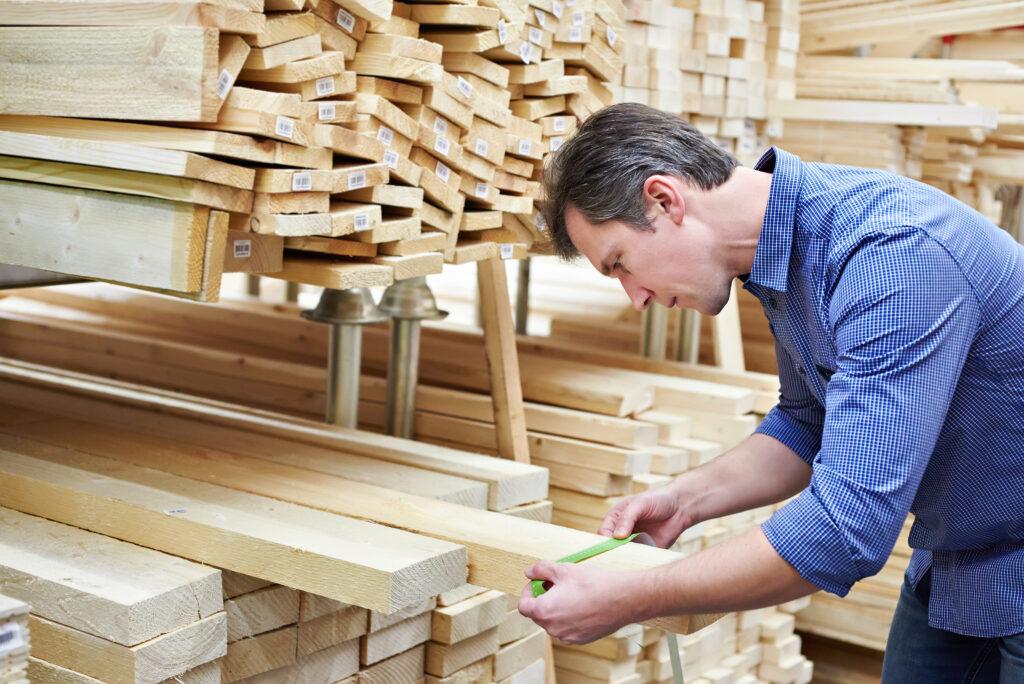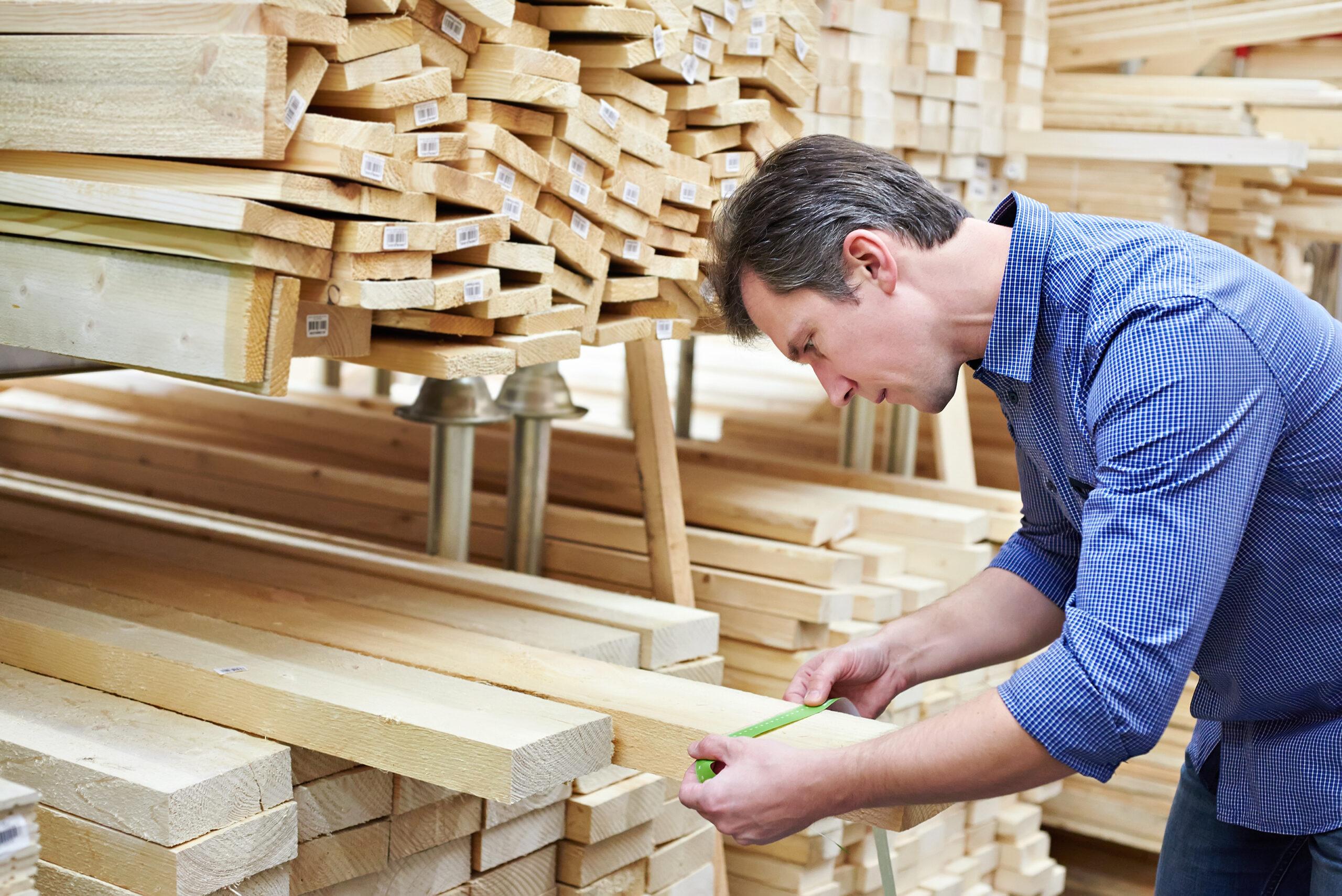We’ve rounded up some of our favorite alternatives to lumber that can help you get the job done. Do you have a favorite?
Choosing which one that will work for your project may depend upon what your project entails; and not all may necessarily be cheaper.

Metal Studs
While the cost of these studs is not necessarily less expensive, they can be an option with some benefits of their own.
Reclaimed Wood
Most reclaimed wood has a rustic, weathered look that appeals to lovers of cottage or beach-house styles, but you can give the wood a more contemporary appearance with a thorough sanding and a coat of paint or wood stain.
Engineered Wood
These floorboards are constructed from layers of wood with a core layer of a substrate, such as plywood. The top layer is made of a hardwood and is usually around 2mm to 6mm thick. As a result, once the floor is laid, the effect is no different to a solid-wood board.
Cement Board
These concrete sheets are commonly used under tile or to replace drywall especially in wet areas since they are moisture resistant. There’s no reason it can’t be used on it’s own if you give it a few coats of paint or stain.
“Wood” Tile
Wood-effect tiles, either ceramic or porcelain, are a great way to incorporate a wood look into an area of high moisture without all the effort and maintenance. They are also ideal for rooms that receive harsh sunlight as there’s no possibility of fading like it would on natural wood.
Plywood
It was once considered a cheap building material, but plywood is really having its moment in the spotlight and is fast becoming one of the trendiest interiors finishes for floors, walls and furniture.
Veneer
Veneer is formed using a thin layer of wood applied to a substrate core such as MDF or particle board. As only a fine layer of wood is used, a substantial amount of material can be created from one log.
Insulated Concrete Forms
ICF systems use polystyrene foam blocks that act as forms, and ready-mix concrete is poured into the hollow form to build reinforced concrete walls.
Wood-Effect Concrete
Concrete was previously considered a construction material, but is increasingly being used as an exposed finished surface. To create a warmer look, concrete can be set with the appearance of wood; and once stained, can be a convincing wood alternative.
Earth Ship
This is a construction method using old car tires filled with straw and mud/clay and could be a potential option depending upon what you’re interested in building and local building codes. They can make an easy retaining wall.
Used Brick
Much like reclaimed wood, this is an eco-friendly option since you’re reusing existing materials, and can fit into sevearl design options well either weathered or painted.
Corrugated Metal or Plastic
You can use these large sheets of wavy metal to cover interior walls, add contemporary flair to the sides of a kitchen counter, form the walls of a backyard shed or urban chicken coop, or even cover a ceiling in today’s version of old-fashioned pressed tin tiles. Keep in mind that if you use metal sheeting outdoors, a patina of rust will form on the metal unless it’s protected with sealant.
Cork
Cork is made with bark rather than the core of a tree. That means it re-grows faster and is more sustainable in some ways than many traditional wood products. It is a popular flooring material, and is growing into other areas of construction and remodeling.
Bamboo
Bamboo is often considered a wood, but is actually a grass that is fast-growing and as strong as some slow-growth woods. It is becoming increasingly popular for flooring, used in furniture and other construction materials. If used outdoors, bamboo needs to be sealed to prevent rot.
Shipping Containers
While the expenses involved in converting a basic steel box into a habitable home, shed, outbuilding, etc. can add up quickly, the shipping container itself generally isn’t too costly. They’re available in two standard sizes: 8′ x 20′ and 8′ x 40′.
Composite Decking
The type of deck lumber often called plastic lumber is made from either recycled plastic or from new materials such as PVC. Plastic lumber has other applications besides decking, include trim boards, railings, outdoor furniture, siding, and fences.
3D Printing
This option is still a growing area in building, but could be worth exploring depending upon your needs.
Cordwood
Cordwood masonry is a natural building technique wherein pieces of “cordwood”, or relatively short pieces of debarked trees, are placed crosswise along the wall. These pieces of wood are held together with some sort of masonry mortar, such as cement or earthen materials like cob. Alternatives to the cordwood that use this same technique can be bottles or glass.
For commercial property inspections in the Dallas/Fort Worth area, including a thorough and informative home inspection report, learn more at
or request a quote for a commercial inspection at
682-351-2267



